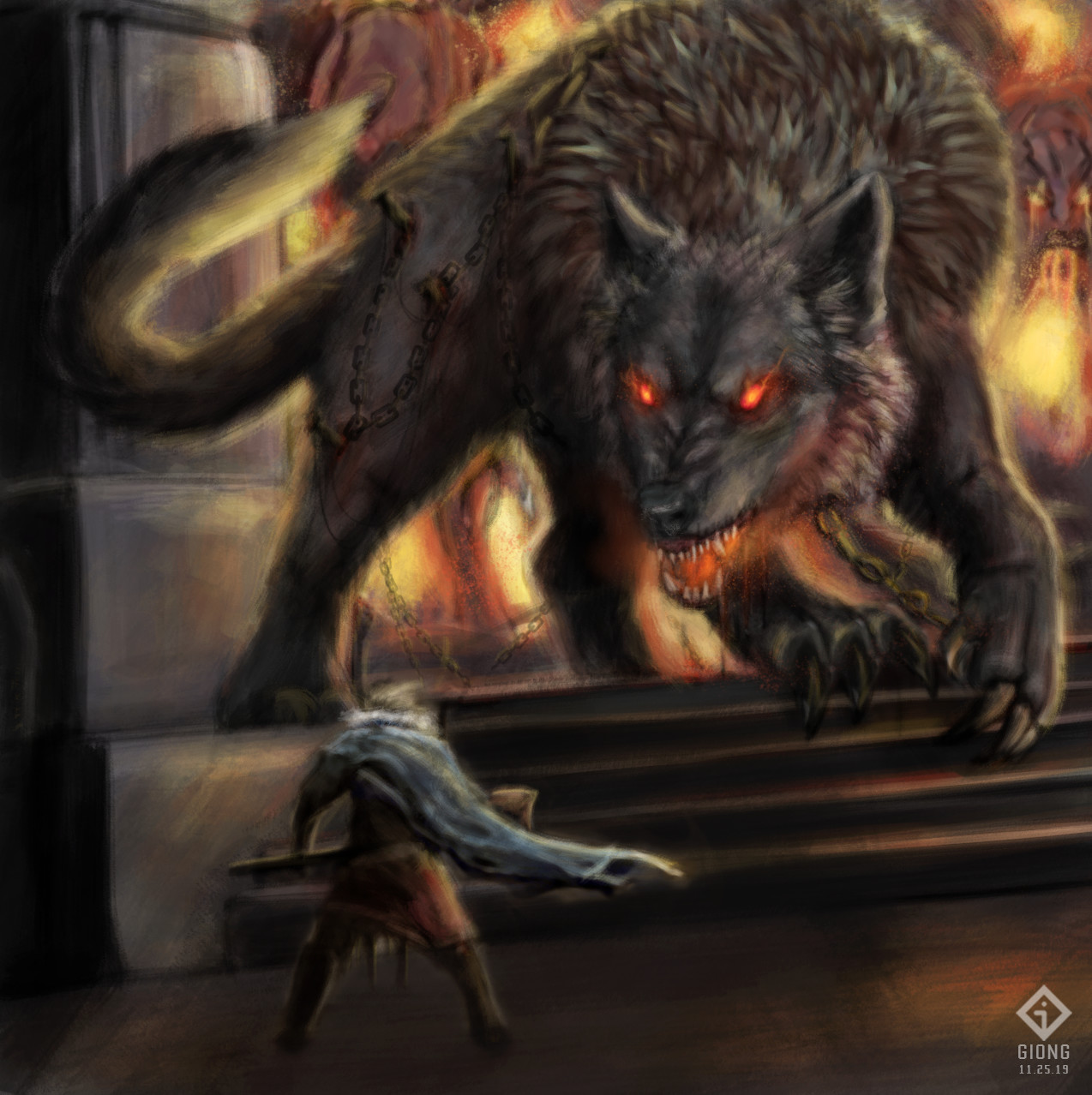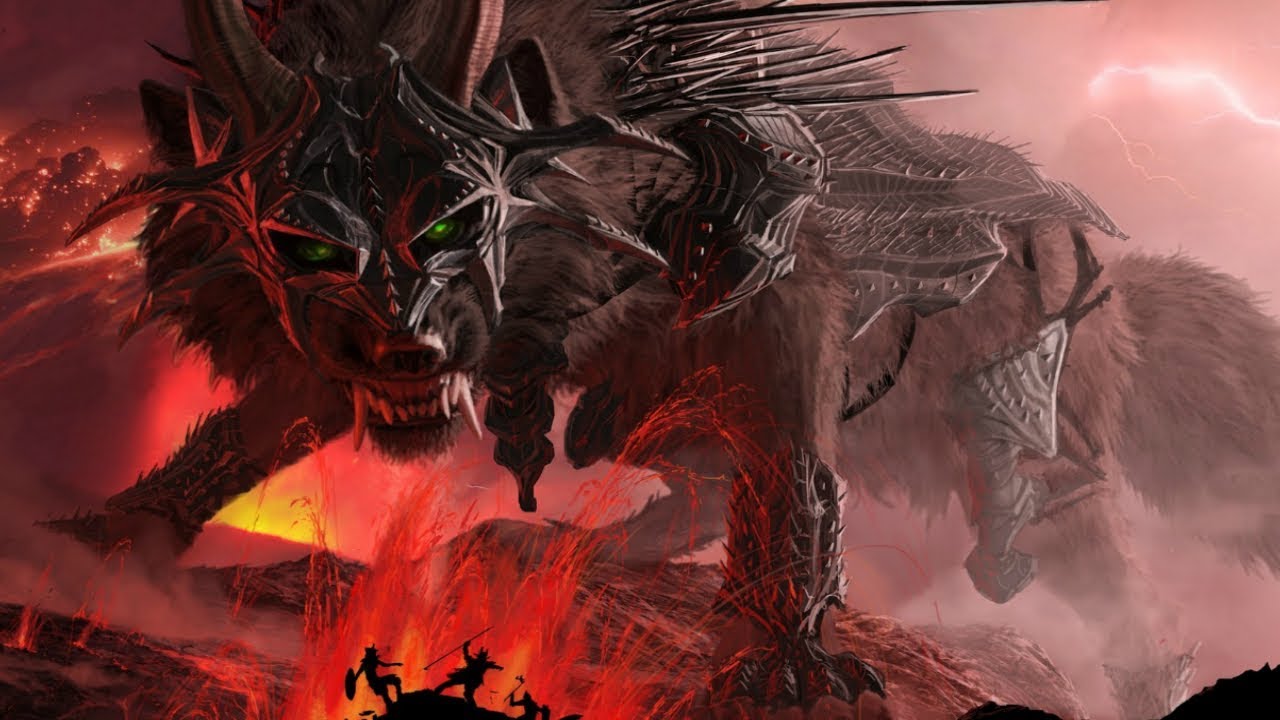Norse mythology is based on the myths of the North Germanic people that began from Norse Paganism through Christianization of Scandinavia into the Scandinavian modern traditions. It consists of powerful and strong deities, heroes and beings that are derived from various sources that date back from before and after the pagan period.
Some of these deities and heroes include Thor, the god of thunder, Odin, the raven flanked god, Freyja, Seior and others. On the other hand, Garm, also called Garmr, is a wolf or dog associated with Ragnarok and Hel. Garm is described as a blood-stained Hel’s gate guardian.
Do you want to learn more about Garm in Norse mythology? Then get comfortable as this article will give you all the information that you need.

Table of Contents
The History
Garm in Norse mythology refers to a dog or wolf associated with both Hel and Ragnarok. Hel in Norse mythology refers to a legendary being that presides over a realm bearing the same name. Ragnarok in Norse mythology indicates a series of events including a fierce battle foretold to cause the death of significant figures like Odin, Tyr, Thor, Heimdallr and Freyr.
It is told that Ragnarok will also lead to natural disasters and the sinking of the world in water after which a new world will resurface that will be fertile. The surviving gods will return and repopulate the world using two human survivors.
Etymology
Garm or Garmr’ is a dog or wolf associated with the forces of destruction and the underworld. However, his etymology is unknown, and the information about him is scarce. Some sources, like the Poetic Edda, give us some information about him.
Poetic Edda
In the Grimnismal, which is one of the poems in the poetic Edda, he is described as being to canines what Yggdrasil is to trees and Odin to gods. This is probably the greatest exemplar of them all. In the Voluspa, which is another Eddic poem, Garm forms part of the refrain.
While the Grimnismal calls him a ‘hundr’ which mean ‘dog’, the Voluspa calls him ‘freki’ which means ‘wolf’. Mention is made to Garm in the events leading to and during Ragnarok, which is the destruction of the cosmos and re-submergence into chaos. Another event that Garm features in Ragnarok is the escape of the wolf Fenrir that had been tied up by the gods and abandoned in a remote swamp so that he doesn’t devour the cosmos.
Garm and Fenrir
Fenrir that means ‘He Who Dwells in the Marshes’ is the most notorious of all other wolves in Norse Mythology. He is the son of Loki and Giantess Angrboda and therefore a brother of Jormungandr and the underworld goddess Hel. The Aesir gods are said to have raises Ferir to keep him under control and prevent him from causing mayhem in the nine worlds.
When the gods saw he was growing quickly, they decided to chain him in an abandoned swamp. It is said that at Ragnarok, Fenrir breaks free from his chains and runs across the world with both his upper and lower jaws touching the sky and ground respectively; therefore, he devours anything/anyone that is in his path. In the same context, a Norse Poem mentions that Garm that will break free from his chains at Ragnarok it is thus believed that he could be Fenrir using another name.
Another source details a wolf called ‘Moon-garm’ that will consume the moon. Therefore, the moon-consuming wolf, sometimes called ‘Hati’ which means ‘hatred’ could be another extension of Fenrir and/or Garm assuming that Garm himself is not Fenrir.

Final Remarks
Garm also called Garmr in Norse mythology, refers to a wolf or dog that is associated with the underworld or powers of destruction. In some of the poems, Garm is to canines what Odin is to gods and Yggdrasil to trees. Some sources describe him as the extension or Fenrir himself because it is said that Fenrir breaks free from chains and devours anything in his path and the same is being said about Garm.
